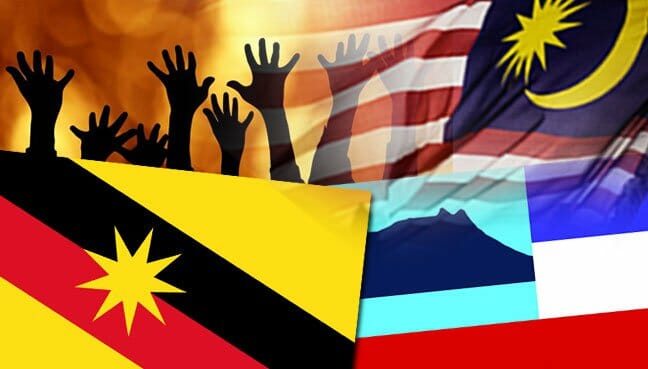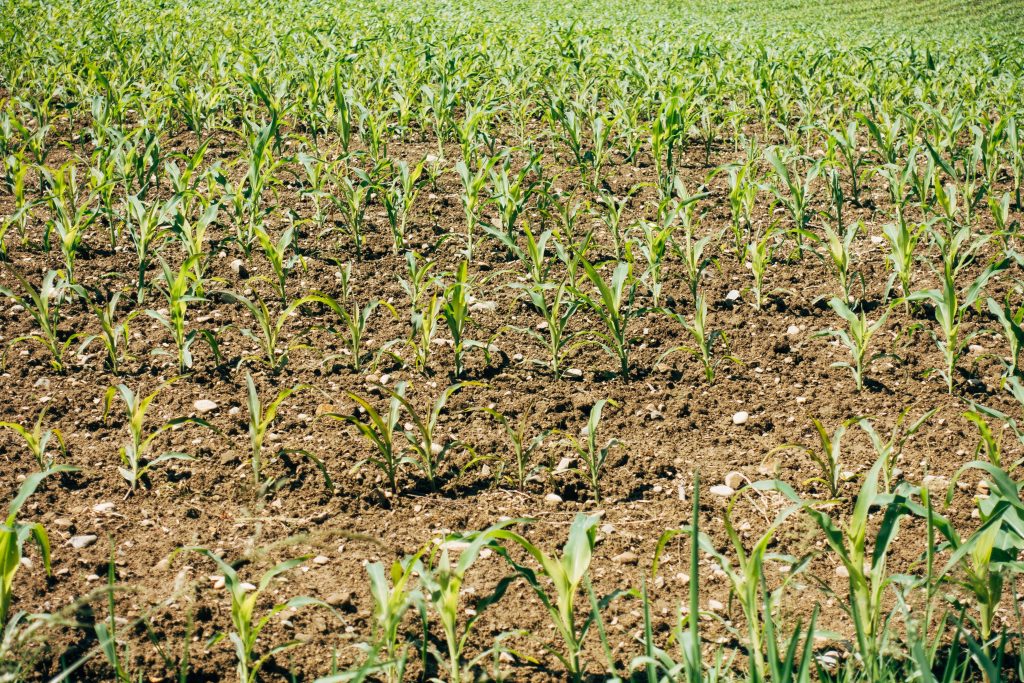
Published by Business Today, The New Sarawak, Astro Awani, Daily Express & Bernama, image from Business Today.
Although the rapid development of the Covid-19 vaccines provides light at the end of the tunnel, the situation is relatively challenging for Malaysia due to the continuous four-digit daily infection figures. This is especially difficult for Sabahans and Sarawakians as they are still relatively lagging behind in their socio-economic development.
During the first three days of the new year, Malaysia recorded 2,068 of Covid-19 cases on January 1, 2,295 cases on January 2 and 1,704 cases on January 3.
Maybe the National Vaccination Plan that is scheduled to kickstart in February would help to slow down the virus spread but several health experts warned the vaccine is useful only when enough people are vaccinated in the country.
As the government needs to first attend to high-risk groups such as frontliners, those with chronic diseases and also the elderly, it would take some time for all Malaysians to be vaccinated.
As it might take one to two years for the whole population to be vaccinated, the escalation of the Covid-19 cases during recent weeks implies three by-elections – Batu Sapi parliamentary constituency in Sabah, the Gerik parliamentary constituency in Perak and the Bugaya state constituency in Sabah would not be held anytime soon.
This is also applicable to the Sarawak state election that has to be held by August 2021. Only when the Election Commission (EC) issues stringent standard operating procedures (SOPs) for elections such as no interstate and inter-district travels, no mass gatherings and no house visits by candidates or their supporters during the entire campaign period, there is a possibility for these elections to be held during the new normal.
However, the issues of capacity, logistics and limited preparation time would be the EC’s hindrance in organising elections during this health crisis. This can be seen during the sudden call of Sabah’s snap election on Sept 26. As the EC could not expand postal voting to Sabahans who are staying in Peninsular Malaysia or Sarawak, Sabah instantly became the most infectious state in the third wave of Covid-19 outbreak in the country.
As of October 18, most of the 443 travellers from Sabah have tested Covid-19 positive and generated at least 24 clusters in other parts of Malaysia. From single-digit figures in August, Malaysia saw its highest daily cases of 871 on that day.
Hence, there is an increasing fear the rising number of the Covid-19 cases would threaten the economic livelihoods of Sabahans and Sarawakians even more, as the Covid-19 third wave would cause both states’ poverty rate to more than 19.5 percent and 9 percent respectively based on the 2019 Poverty Line Income.
Based on the 2019 Household Income and Basic Amenities Survey (HIS) Report, the composition of Sabah’s and Sarawak’s skilled workers only comprise 14.4 percent and 20.3 percent respectively. As there are limited job opportunities, many Sabahans and Sarawakians choose to migrate to bigger cities or overseas for better opportunities.
The never-ending delay in the Pan Borneo Highway construction and the issue of the dilapidated schools in both Sabah and Sarawak also revealed the problem of underdeveloped infrastructures in both states.
According to the recent findings from The Auditor General’s Report 2019 Series 1 on the activities of ministries, federal government departments and federal bodies, the Lahad Datu Bypass route package under the Sabah Pan Borneo Highway project was only 37.4 percent completed as of Sept 21, 2019.
Based on the statement from Senior Works Minister Datuk Seri Fadillah Yusof on Jan 4, Phase One of the Sarawak Pan Borneo Highway project, which covers 786 km from Sematan in southern Sarawak to Miri was 51 percent completed.
In addition, the former Sabah education and innovation minister Datuk Dr Yusof Yacob indicated in April 2020, out of 1,296 schools in Sabah, 589 were classified as dilapidated. Sarawak education, science and technological research assistant minister Dr Haji Annuar Rapaee indicated 647 dilapidated schools in Sarawak still require urgent attention.
Moreover, access to a clean and treated water supply in rural areas remains a challenge to both Sabah and Sarawak. Compared with other states that have achieved more than 90 percent access to such a supply in 2016, Sabah recorded one of the lowest access at 79 percent and Sarawak at 80.4 percent. In terms of rural access to electricity supply, Sarawak recorded the lowest, which is at 85.4 percent while Sabah stood at 92.4 percent in 2017.
Due to limited private investment and complicated local authority procedures, both Sabah and Sarawak recorded lower than the national average of 116.7 per 100 inhabitants for mobile-broadband penetration in the second quarter of 2020 – 78.8 for Sabah and 102.0 for Sarawak, according to the Malaysian Communications and Multimedia Commission (MCMC).
As students have to depend on a particular spot to gain internet access for online learning, Veveonah Mosibin from Pitas, Sabah had to climb a tree to have a reliable Internet connection for her exams. A teacher from Sarawak had to lead a group of primary and secondary school students from his village in Nanga Sumpa and nearby Nanga Jambu in Lubok Antu on a jungle trek just for better Internet coverage.
Till today, Sabah and Sarawak also have a smaller distribution of doctors, specialists and teachers than on the peninsula. Moreover, the lack of medical centres and amenities has raised the cost of healthcare while the lack of education facilities has deprived some rural folks of an education.
Therefore, to narrow the socio-economic development gap between East Malaysia and the Peninsular, EMIR Research has the following policy suggestions for both federal and state governments to consider during this new year:
- The federal government needs to introduce a solid and robust governance framework that limits the power of Ministers, Government officials and office bearers, preventing them to interfere with the methods of procurement and companies that will be awarded the contract. Letting civil servants perform their duty by following procurement rules and process will ensure the best value of money besides providing due diligence to the process and outcomes;
- The federal government has to introduce checks and balances mechanism in procurement dealings with the involvement of the Integrity Unit and Internal Audit Officers, thereby ensuring construction projects can be completed on time;
- Both state governments have to work closely with the Federal Government by working on interstate projects such as roads, utilities and flood mitigation infrastructure;
- The state government agencies in both states have to work closely with the private sectors in rural areas to help attract higher value investment, promote rural tourism activities and agrotourism, enable product to be sold via digital applications and social media, as well as enhance employability through knowledge enhancement and skills training;
- The federal government needs to expand fibre optic networks, together with the commercial development of communication infrastructure in the rural areas of Sabah and Sarawak, bringing connectivity to more rural households and entrepreneurs on top of bridging the digital divide between urban and rural areas;
- The federal government needs to work closely with MCMC as well as local authorities and state governments to ensure there is no variation in quality and cost of building digital infrastructure in both Sabah and Sarawak;
- Both state governments have to improve the coverage of primary healthcare in the remote areas of both states, with the provision of the mobile clinic and flying doctor services; and
- The Ministry of Education Malaysia should encourage teachers to have close contact with their students based in rural areas of Sabah and Sarawak by distributing physical learning materials and organising regular home visits.
It is good a total of RM9.6 billion of development expenditure have been allocated for both Sabah and Sarawak under the national Budget 2021 to construct and upgrade water and electricity infrastructure, roads, as well as health and educational facilities in both states. What is most needed is the effective monitoring of all these expenditures so that the monies go to where they are supposed to go, immensely benefitting the people of the two states.
Moreover, with an expected increase in the sales tax revenue for petroleum products, both state governments should utilise the budget surplus received this year, by working closely with the federal government to catalyse socio-economic development in both states.
Amanda Yeo is Research Analyst at EMIR Research, an independent think tank focused on strategic policy recommendations based on rigorous research.

